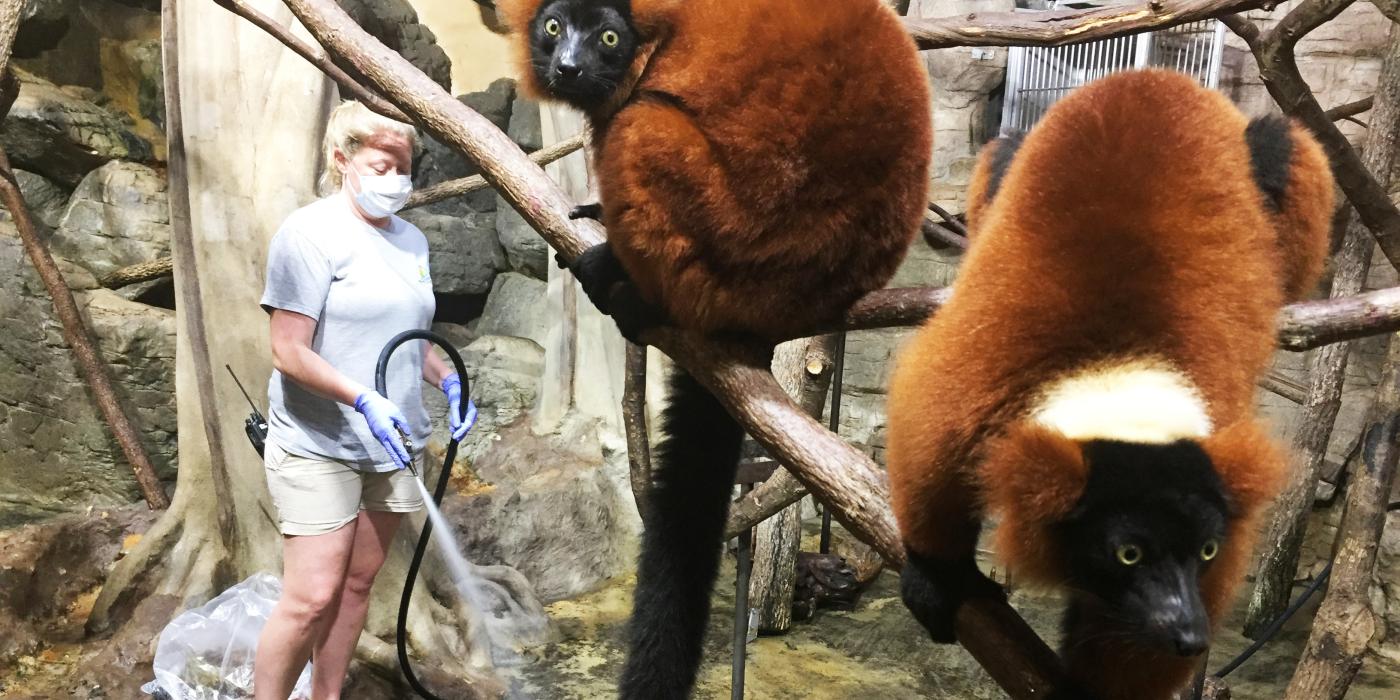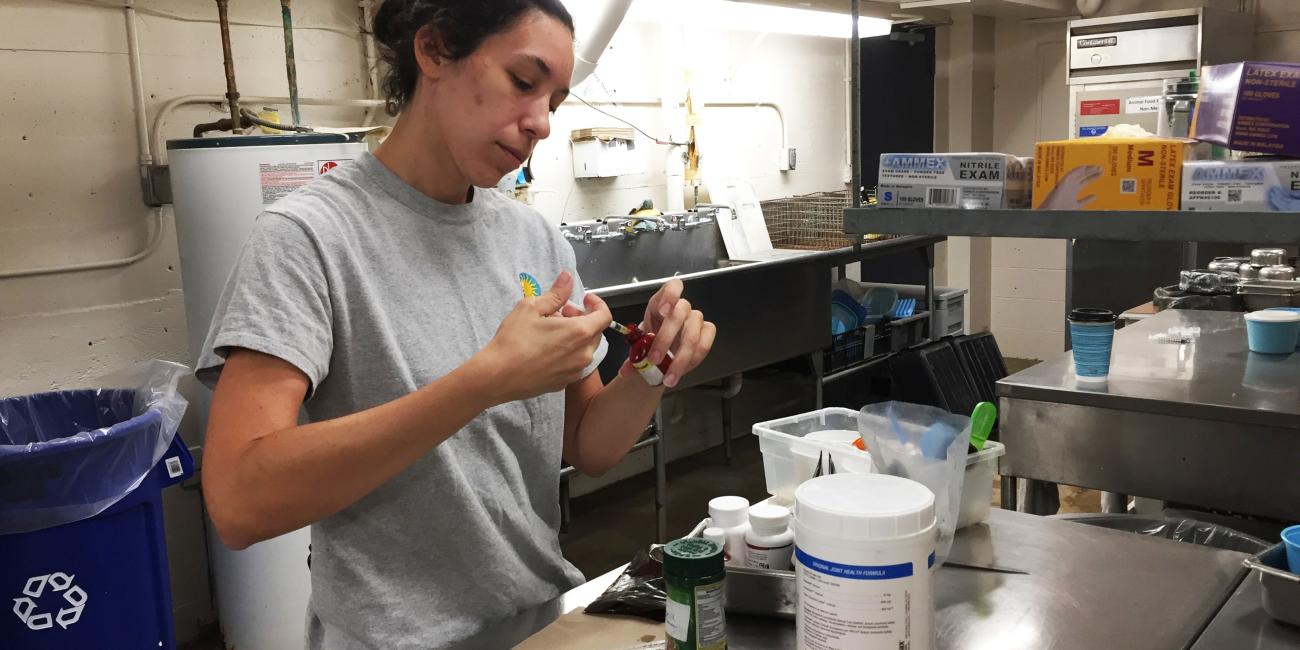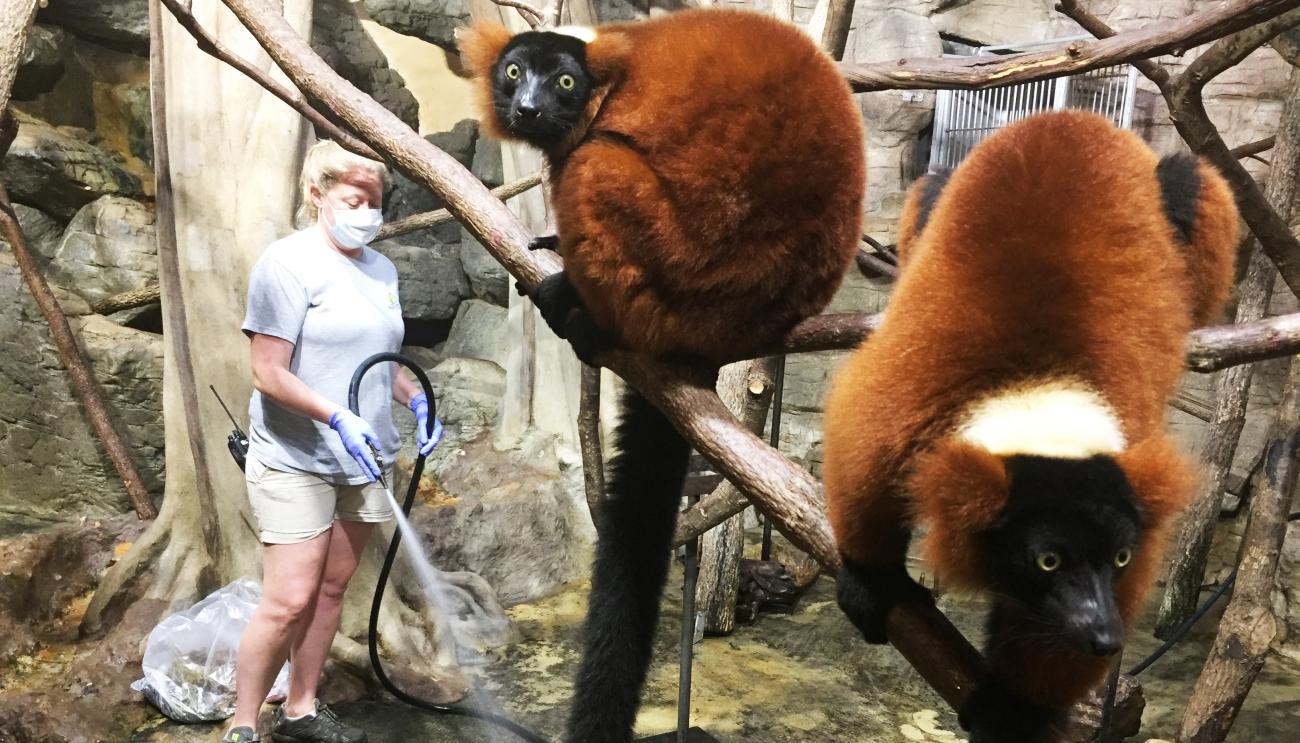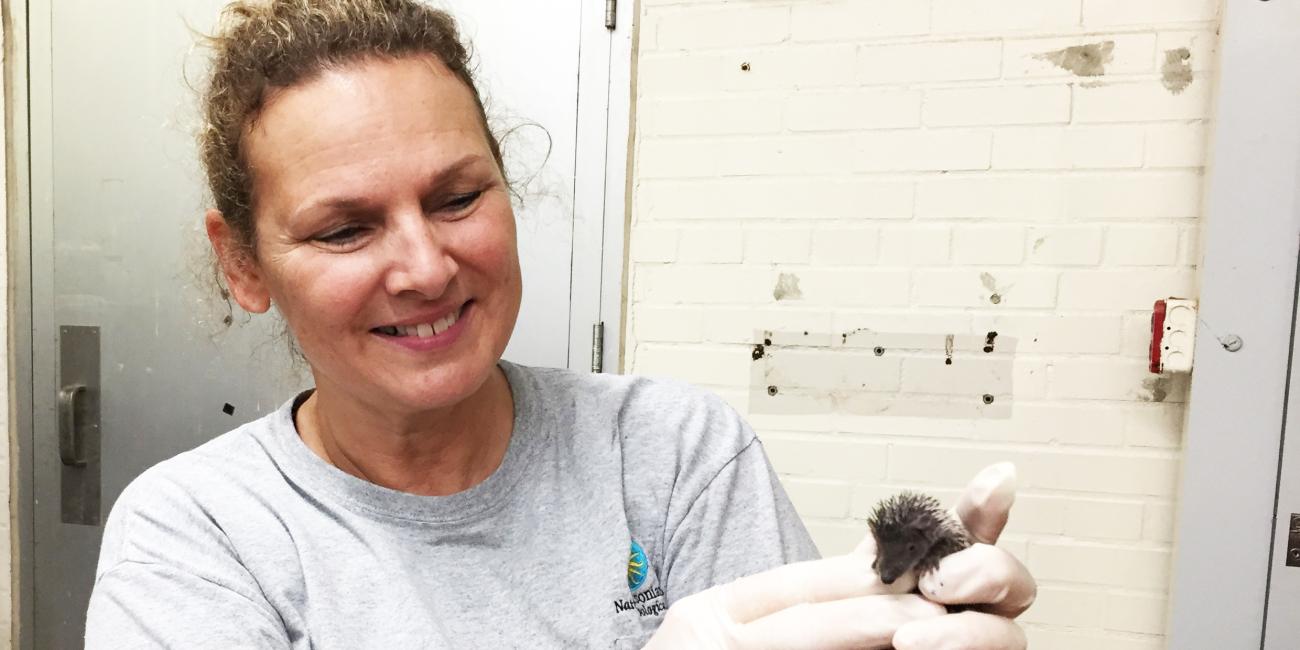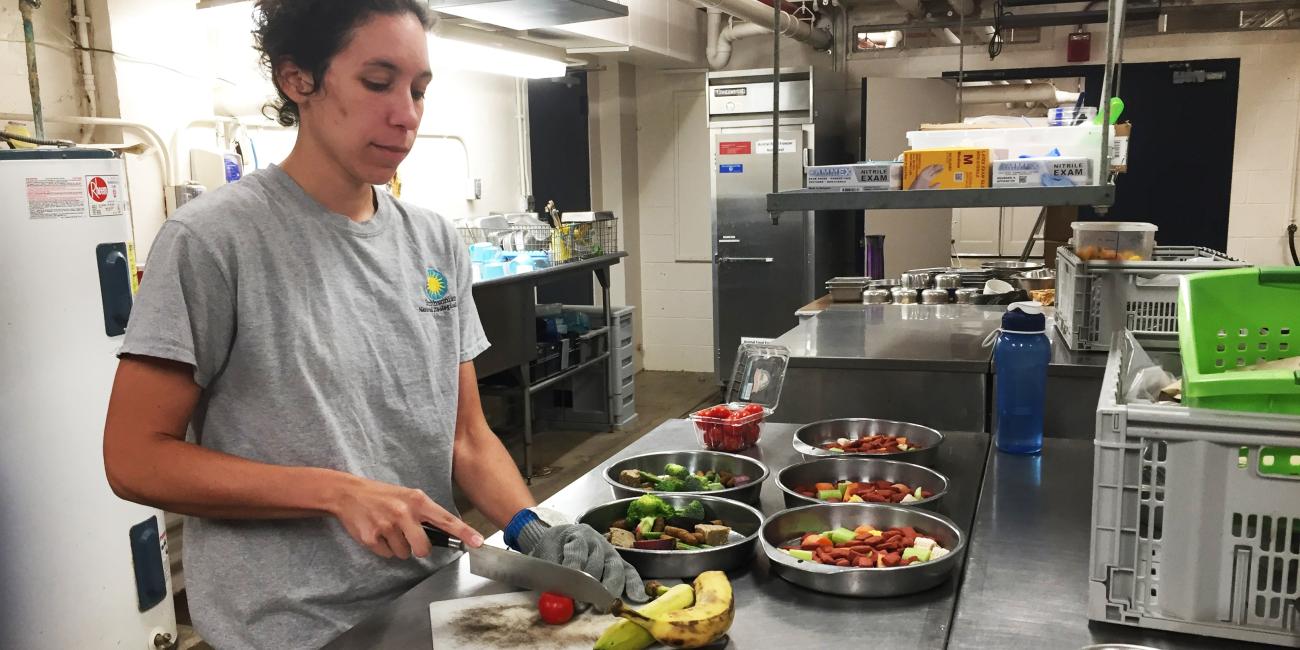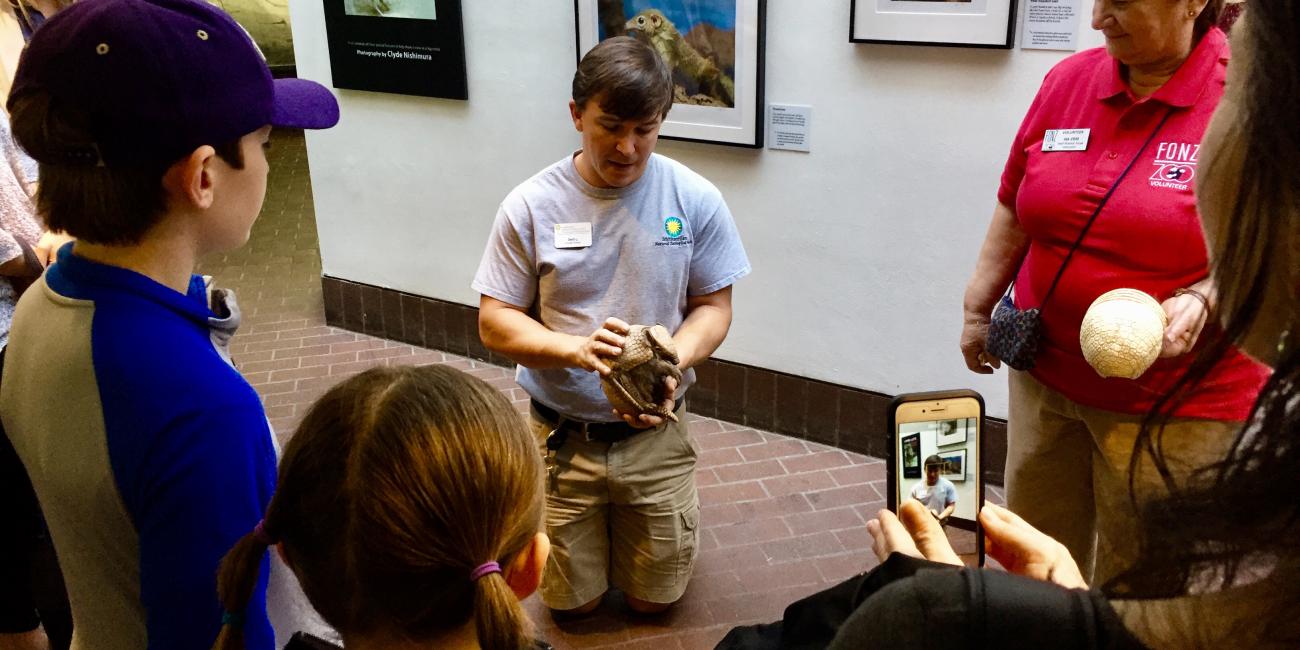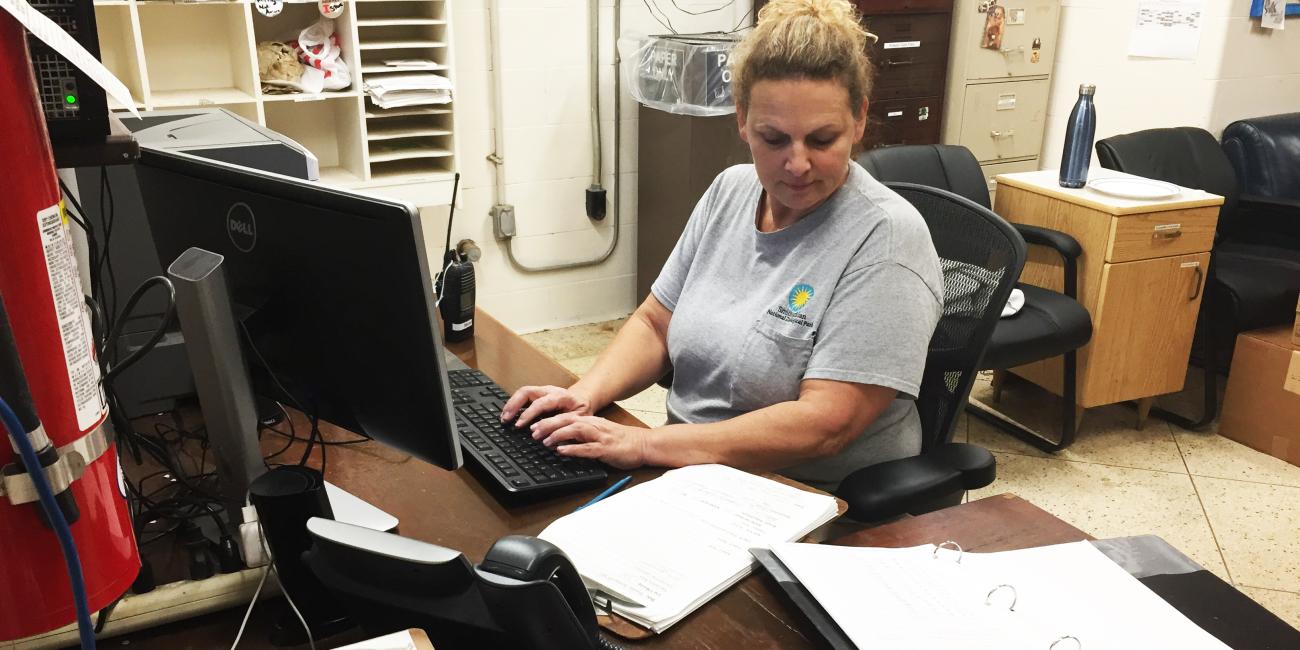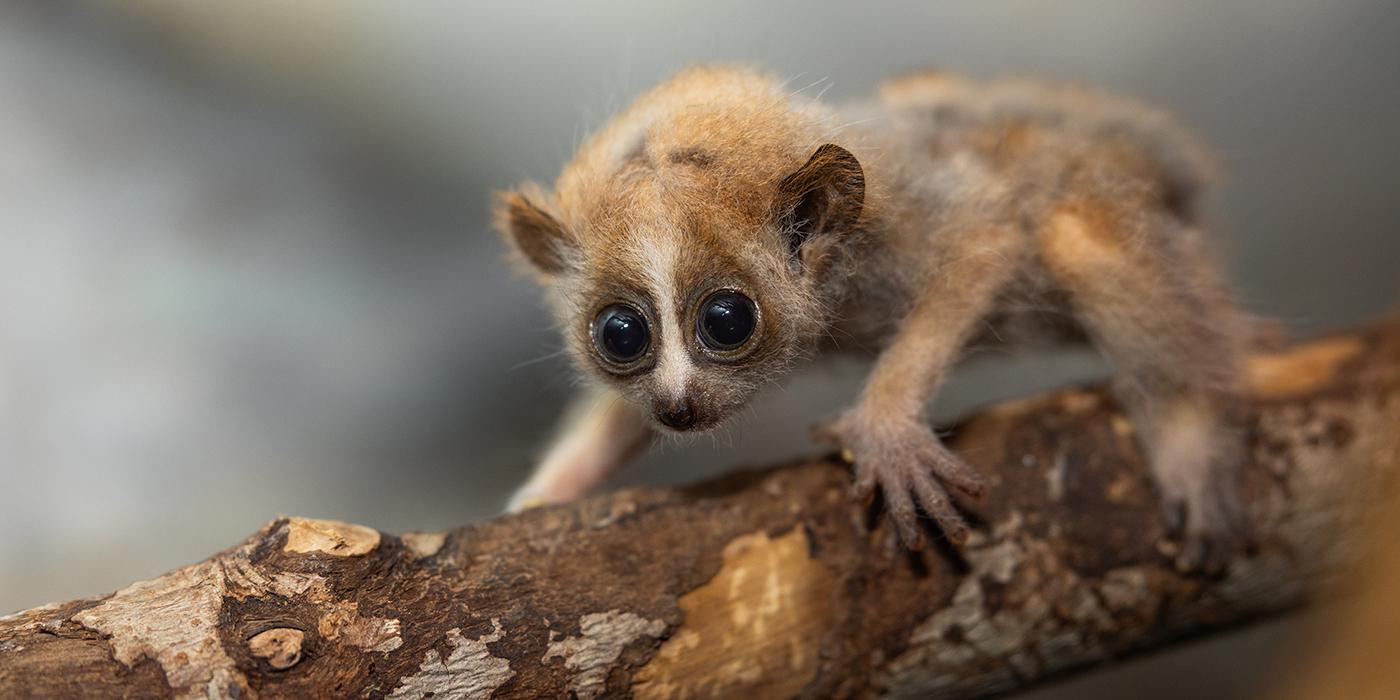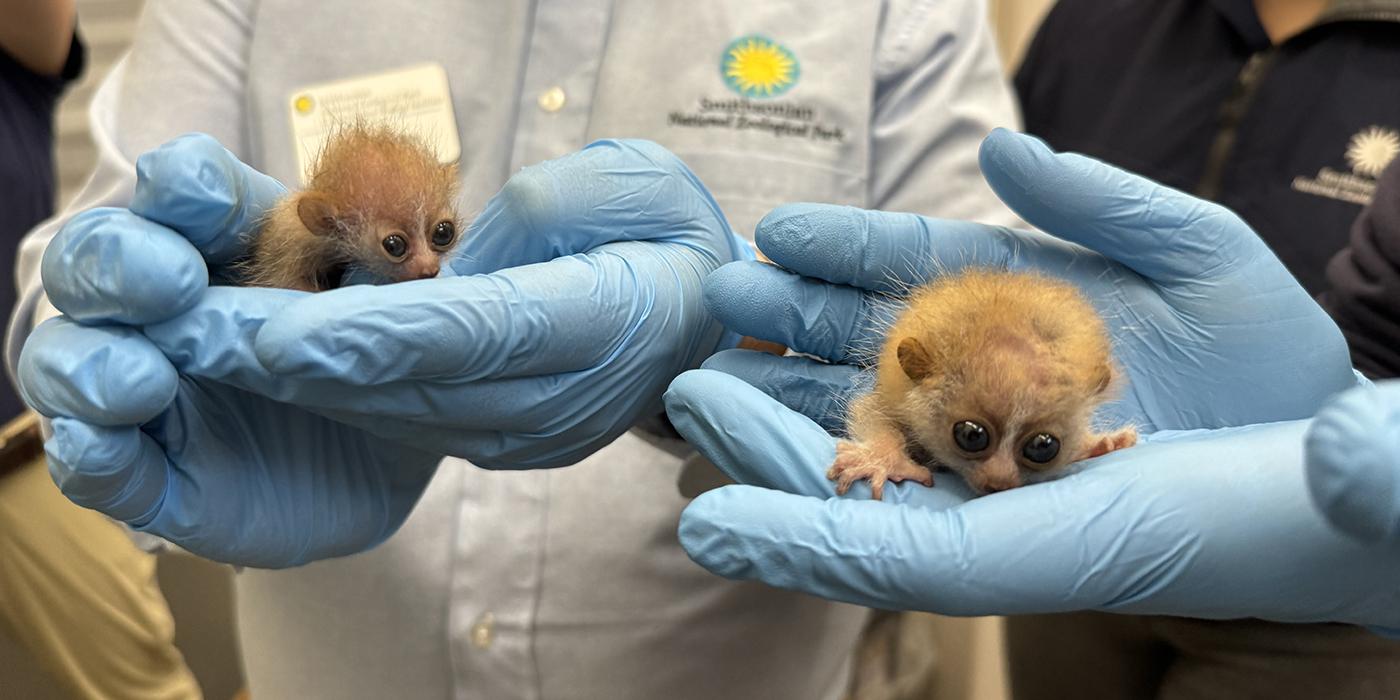A Day in the Life of a Small Mammal House Keeper
Some of the Zoo’s most marvelous mammals are also the smallest—from alluring armadillos to endearing naked mole-rats. More than 35 species are on the move at the Small Mammal House, and it takes a team of creative keepers to care for them. Peek behind the scenes as keepers prepare puzzle feeders, evaluate animal health and educate Smithsonian’s National Zoo visitors about these tiny animals with BIG charm.
Keepers arrive at 6:30 a.m. and, after a brief team meeting, get to work preparing diets for Small Mammal House residents. There are about 120 animals in our care—and they all eat breakfast! In this photo, animal keeper Esther is dispensing medication into an animal’s diet.
Cleaning time! There are more than 40 habitats on view at the Small Mammal House, as well as spaces behind the scenes where animals can have some quiet time. In this photo, our red-ruffed lemurs are ‘supervising’ their keeper, Ashton, as she hoses, disinfects and scrubs their exhibit clean. Some animals are not quite as gregarious or comfortable around people. Keepers have trained them to shift into an off-exhibit area on cue. This enables keepers to safely clean the enclosures while minimizing the animals’ stress.
How much does a 2-week-old lesser tenrec baby weigh? Animal keeper Maria is about to find out! We weigh all babies born at the Small Mammal House in order to ensure they are gaining weight, track their growth and/or offer supplemental feeding if they are not getting enough milk. When mom gives birth, we give her some time to bond with the babies in her den. We closely watch her behavior to determine when the time is right to do a quick health check and weigh the babies. This is the first time we’re weighing our recent litter. This little one weighs just over 20 grams!
The Zoo’s Department of Nutrition Science delivers animal diets around the Zoo every morning. But, before the food gets to the animals, keepers separate the diets into food pans and set aside a few extra treats for enrichment and training. In this photo, Esther is putting the finishing touches on the diets for our howler monkeys and red-ruffed lemurs. Keepers offer them a variety of fruits and vegetables every day, including banana, broccoli, corn, carrots and tomato, among others. The red leaf-eater biscuits pictured here are a great source of fiber.
Just as important as providing our animals with clean habitats and full bellies is looking after their physical and mental well-being. To encourage the animals to move and use their natural behaviors, we provide them with a variety of items as enrichment to keep them engaged and busy throughout the day. Puzzle feeders—like this large kong toy—contain our coatis’ lunch. Animal keeper Kara puts the toy back together before placing it in the enclosure. The coatis must manipulate the kong in order to get to the tasty treats inside. We also enrich our animals by sprinkling different scents (spices) around their enclosure, playing natural sounds or music, conducting training sessions and much more.
Every day at 10:30 a.m. and 2 p.m., Zoo visitors have an opportunity to meet an animal up close. In this photo, animal keeper Seth is introducing everyone to our male three-banded armadillo, Julian. At these encounters, visitors can learn what makes these animals unique, the conservation threats they face and how to help save these species. We also discuss that although these animals often look cute and cuddly, they would not make good pets. It take a lot of hard work to be able to interact with and care for them—they are still wild animals at heart.
Before we get ready to leave for the day, we record information about our animals’ appetites, weights, behaviors, activities (such as enrichment and training) and much more in our daily report. This helps keepers, nutritionists and veterinarians keep track of each animal’s health and ensure that we are meeting their needs.
This article appears in the November 2017 issue of National Zoo News. Enrichment and training allows animals to demonstrate their species-typical behavior, gives them opportunity to exercise control or choice over their environment and enhances their well-being. Learn more about the Zoo’s Animal Enrichment and Training Program.
